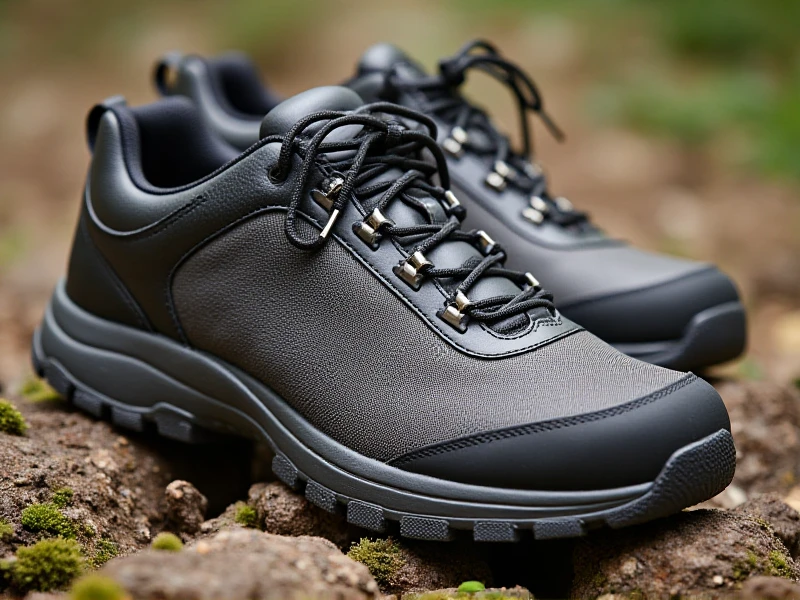Ultimate Guide to Choosing the Best Men's Hiking Shoes for Your Next Adventure
2025-06-03

When hitting the trails, your footwear can make or break the experience. Choosing the right men's hiking shoes isn't just about comfort—it’s about safety, performance, and unlocking tougher terrain. This guide breaks down what truly matters in trail footwear and how to find your perfect pair for any adventure.
Why the Right Men’s Hiking Shoes Matter
Misplaced trails, slippery rocks, or sudden weather shifts demand reliable gear. Hikers often underestimate how quickly soggy socks or strained arches turn a rewarding hike into a struggle. Blisters, ankle rolls, and fatigue sabotage trips faster than bad weather. Men’s hiking shoes engineered with proper support, grip, and weatherproofing prevent these pitfalls.
Key features to prioritize:
- Terrain-Specific Grip: Vibram® soles or multidirectional lugs chew through mud and loose scree.
- Ankle Support: Mid-cut designs stabilize uneven paths; low-cuts excel for lightweight agility.
- Weather Defense: Waterproof membranes (GORE-TEX®) block rain yet offer breathability.
- Cushion & Stability: EVA midsoles absorb shock, while rock plates shield feet from jagged terrain.
Top Picks for Different Hiking Styles
1. Rugged All-Terrain Champions
For technical trails and heavy packs, consider stiff-soled boots like the Salomon Quest 4 Gore-Tex. Its Contagrip® tread bites into damp rocks, and the SensiFit™ ankle collar eliminates slippage during steep descents. Ideal for multi-day treks where ankle support is non-negotiable.
2. Fast & Light Trail Runners
Speed-focused hikers love low-profile options like the Merrell Moab Speed. Weighing under 1.5 lbs, it blends trail-runner agility with hiking shoe durability. The FloatPro™ foam midsole provides cloud-like responsiveness on day hikes or fastpacking routes.
3. Budget-Friendly Trail Warriors
The Adidas Terrex AX4 delivers surprising traction and durability under $120. Non-GTX models are optimally breathable for hot climates, while the Continental™ rubber sole handles slick roots reliably.
Avoiding Common Fit Pitfalls
Trying boots after walking? Your feet swell midday—test footwear when feet are largest. Here’s a pro checklist:
- Thumb’s Width Space: Ensure a thumb fits between your longest toe and the toe box when standing.
- Heel Lock Test: Lace tightly—your heel shouldn’t lift more than 3mm when stepping uphill.
- Break-In Smartly: Wear new shoes indoors for short intervals before tackling 10 mile days.
Waterproof vs. Quick-Dry: Which Wins?
Waterproof men’s hiking shoes (e.g., with GORE-TEX®) shine in snow, rain, or marshy trails—blocking moisture for hours. But in hot, humid climates or water crossings? Breathable non-waterproof shoes (like Columbia Drainmaker™) drain fast, preventing sweat-soaked discomfort.
Care Hacks to Extend Shoe Life
- Rinse After Muddy Hikes: Use a soft brush to prevent grit from degrading glue seams.
- Air Dry Away From Heat: Stuff with newspaper to absorb moisture while retaining shape.
- Rejuvenate Traction: Gentle sanding (100-grit paper) revives slicked-out soles temporarily.
When to Replace Your Hiking Shoes
Even premium mens hiking shoes wear out. Retire them if you notice:
👉 Visible sole separation
👉 Collapsed cushioning (pressured spots feel rigid)
👉 Loss of 50% lug depth
Replacing on time prevents foot fatigue and injury—especially crucial for uneven trails.
Final Tip: Match Shoe to Ambition
A weekend warrior walking groomed paths? A ventilated low-top works wonders. Conquering Patagonia? Invest in burlier boots prioritizing ankle lockdown. Your footwear shouldn’t just survive trails—it should empower you to own them.
For challenging hikes where every step matters, men’s hiking shoes merging precision fit, science-backed traction, and smart weather protection transform grueling miles into unforgettable joy. Don’t walk—conquer. Your next peak awaits.
Category: